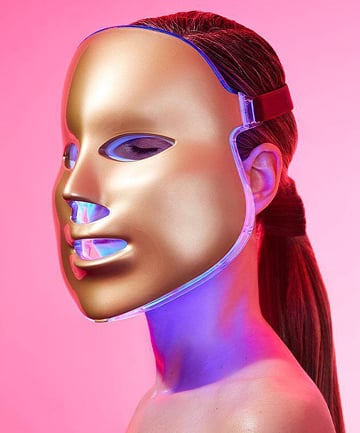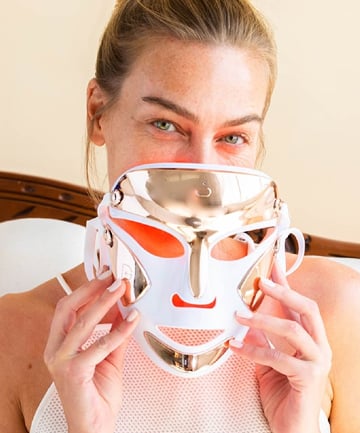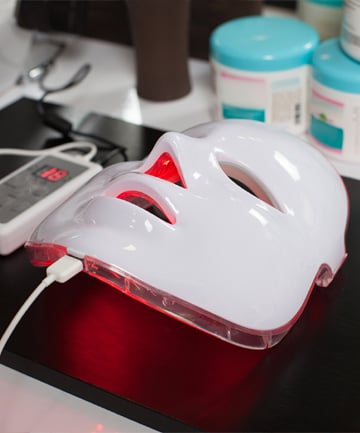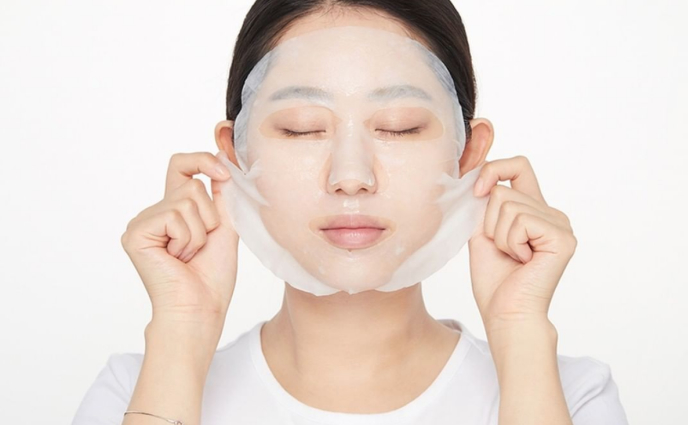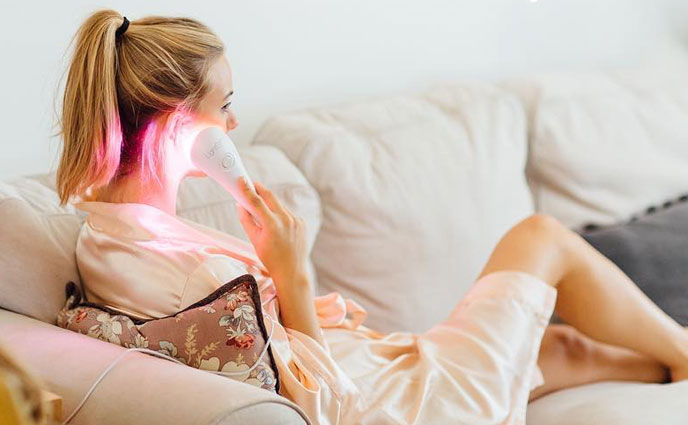Do LED masks look cool? Instagram says yes. But... are they safe? That's a question that we might not immediately consider when we're looking to try the latest viral facial tool. After all, if something is for sale in shops and legit online retailers — well, surely it must be safe for at-home use... right?
We're shining a light (sorry) on all aspects of at-home LED treatments, so you can find out everything you need to know before trying one. Read on to see what experts say about using at-home LED masks and how the devices compare to professional treatments.
Image via @drdennisgross
Dr. Morgan Rabach, board certified dermatologist and co-founder of LM Medical, says that LED, or light emitting diode therapy, is a skin care treatment that uses varying wavelengths of light. Dr. Ava Shamban, board certified dermatologist and founder of Ava MD Dermatology and the Skin Five by Ava MD Clinics, adds that LED therapy can be referred to as "photo rejuvenation" or "light therapy."
Shamban says that generally the skin care treatment uses infrared light transmitted through bulbs in varying wavelengths. The different wavelengths are different colors and each one sends messages to the layers of skin to trigger a specific and expected reaction. The most common wavelengths are red and blue. (Some devices have green, yellow, white lights, etc.) Red is primarily used for anti-aging while blue light is used for treating acne, says Rabach. LED can also stimulate regeneration and fight inflammation and bacteria, per Shamban.
Image via @mzskinofficial
Today's viral at-home LED devices are actually inspired by the professional, in-office treatments. So what's the difference?
Consistency is key in the pro version. Rabach says that office procedures take about 20 minutes at a time. Clients will need to go back once a week for up to 10 weeks then once every few months after that. These treatments are tailored to the individual's skin and are performed with safety protocols in place. In-office treatments are also stronger than at-home devices.
Professional LED treatments might be administered with other procedures. For example, Shamban can perform LED therapy alongside other procedures for anti-aging, acne and texture issues. Additionally, she always recommends partner treatments or products that can be used at home to continue the efficacy and consistency.
Image via DragonImages/iStock/Getty Images Plus/Getty
"From reputable makers and manufacturers, we can generally expect safe standards when [at-home LED masks are] used as directed," says Shamban. She continues that the intensity of at-home devices is usually significantly less than in-office versions, which are monitored at all times by licensed professionals. At-home versions can include different wavelengths of light (e.g. red and blue). The treatments can be timed to automatically shut off when finished. For example, the Dr. Dennis Gross Skincare SpectraLite Faceware Pro, $435, will automatically shut off after three minutes.
Some at-home treatments could be used on a daily basis. The Angela Caglia CellReturn LED Wireless Mask, $1,900, can be used up to 20 minutes daily after cleansing. It is suggested users use the MZ Skin Light-Therapy Golden Facial Treatment Device, $625, two to three times a week starting with 10 minute sessions and gradually working up to 30 minutes.
Image via @drdennisgross
They're Not Tailored to Individual Needs: With in-office LED therapy, dermatologists are able to assess skin's needs and tailor the procedure to each person. That obviously doesn't happen with at-home LED devices and masks. And one size doesn't necessarily fit all: Rabach points out that not every patient may require the same amount and duration of treatment.
User Error: In our immediacy-driven world, we want results and we want them now. That can make people guilty of ignoring instructions and pushing treatments more. "Just because some is good, more is not better or best," cautions Shamban. "Following the directions and manufacturer guidelines of any home skin tool or device is paramount to its success and safety." Failing to do so could lead to irritation and other side effects.
Not Prepping Skin Correctly: To go along with the previous point, it is also important to prep skin as directed. That includes everything from washing your face to applying/not applying certain products. Some devices have products that can be applied before and after. Ignore the prep and it's at your skin's risk.
LED Masks and Sensitive Skin: Shamban says that potentially those with sensitive skin can safely use LED masks. That said, she suggests checking with a board certified dermatologist before using LED devices at home, particularly if you have any skin conditions, like rosacea or melasma. Additionally, the devices should be used with caution by people who are using medications like Accutane, retinols, glycolics or antibiotics that make skin more sensitive to light, per Rabach.
Image via Nomadsoul1/iStock/Getty Images Plus/Getty



